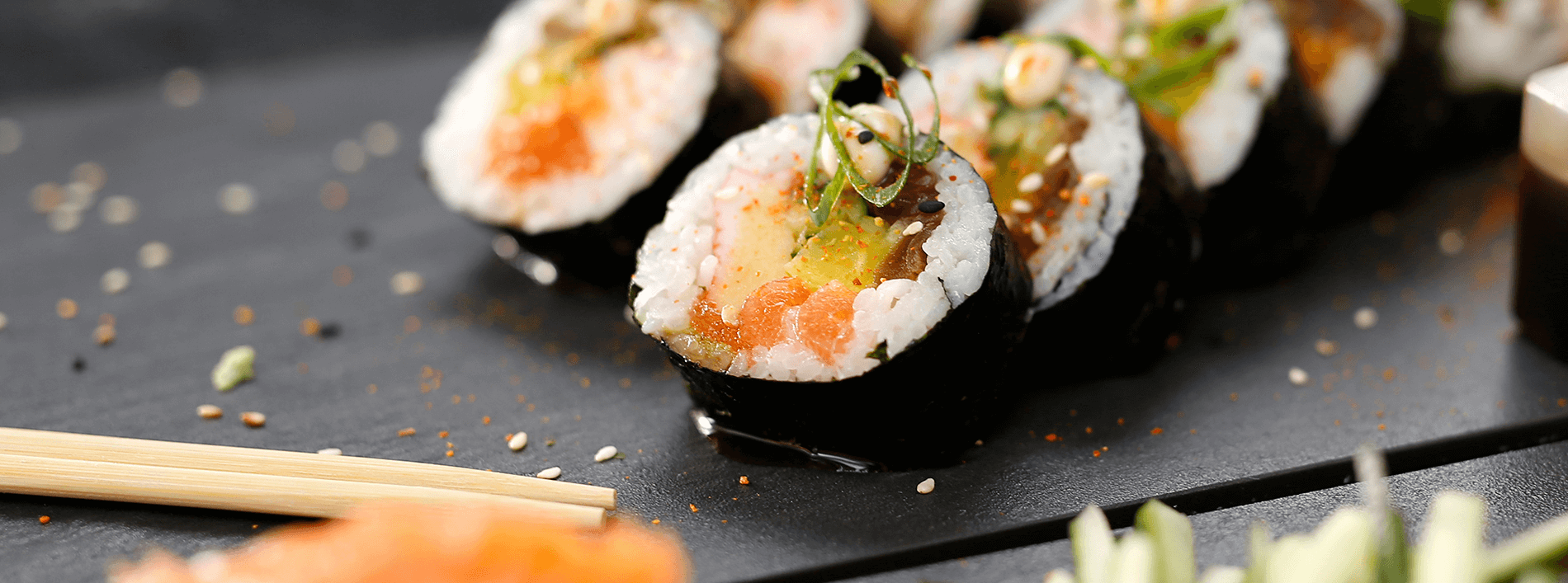How much do we really know about sushi? The answer, despite its modern day ubiquity, is probably not all that much. Sushi has come a long way in the past couple of decades, transforming from a high-end delicacy to a food stuff that sits on supermarket shelves next to the pasta salads and the ready-made sandwiches.
However, despite this move to the mainstream, sushi is still commonly understood. So, we thought we’d take this chance to set a few things straight and debunk a few fishy tales about sushi.
Myth 1 – You should only use ‘sushi-grade fish’
The term sushi-grade is frequently used to imply a premium quality and a superior level of freshness, but there are no regulations relating to the use of this term, so it can be used to describe anything really. Generally speaking, the term will be reserved to denote a store’s freshest fresh, but the definition of the term fresh is of course subjective.
Myth 2 – Sushi is best accompanied with a cup of sake
Not true. Traditional Japanese cuisine dictates that a meal made of rice should not be served with a drink made of rice too. Sake (rice wine) is certainly worth trying, but if you’re going to play by the rules, it’s probably best enjoyed with some appetisers and salads before the main event. Then, when it comes to the sushi, wash it all down with a green tea or beer.
Myth 3 – Don’t order sushi on a Mondays
The logic behind this myth is that raw fish is best served as fresh as possible, so if you order in from your local sushi delivery restaurant on a Monday, the fish will not be as fresh as it should because there was no catch on Sunday. A good sushi chef understands when it’s the best time to serve each fish. Also, flash freezing the fish at sea means raw fish can remain fresh for a greater amount of time.
Myth 4 – Sushi originates from Japan
You’ll find plenty of conflicting views about the origin of sushi, but one thing’s for sure – it did not originate in Japan. Both China and Southeast Asia are commonly cited as the birthplace of sushi, where fish was gutted, cleaned and wrapped in fermented rice to preserve the fish for months at a time. However, it is thought the Japanese were the first to prepare sushi as a complete dish, eating the fermented rice with the preserved fish. The Chinese and Southeast Asians simply discarded the rice before eating the fish.
Myth 5 – Any dish that does not contain raw fish is not real sushi
The literal translation of the term sushi is ‘sour-tasting’, and this refers to the soured, fermenting rice, or the vinegared rice which is commonly used today. Sushi may contain raw fish, but it can also contain meat or vegetables. So, any dish made with this type of rice can be classed as sushi.
Myth 6 – All sushi should be eaten with plenty of soy sauce
It’s not just soy sauce that comes with sushi. As you can see from our menu, there are a wide range of sauces you can eat with sushi dishes depending on your individual tastes. However, any sushi delivery restaurant worth its salt (pun intended!) will provide soy sauce free of charge. Some dishes will be overpowered by the saltiness of the soy, but sashimi is always particularly delicious after a quick soy sauce bath.



